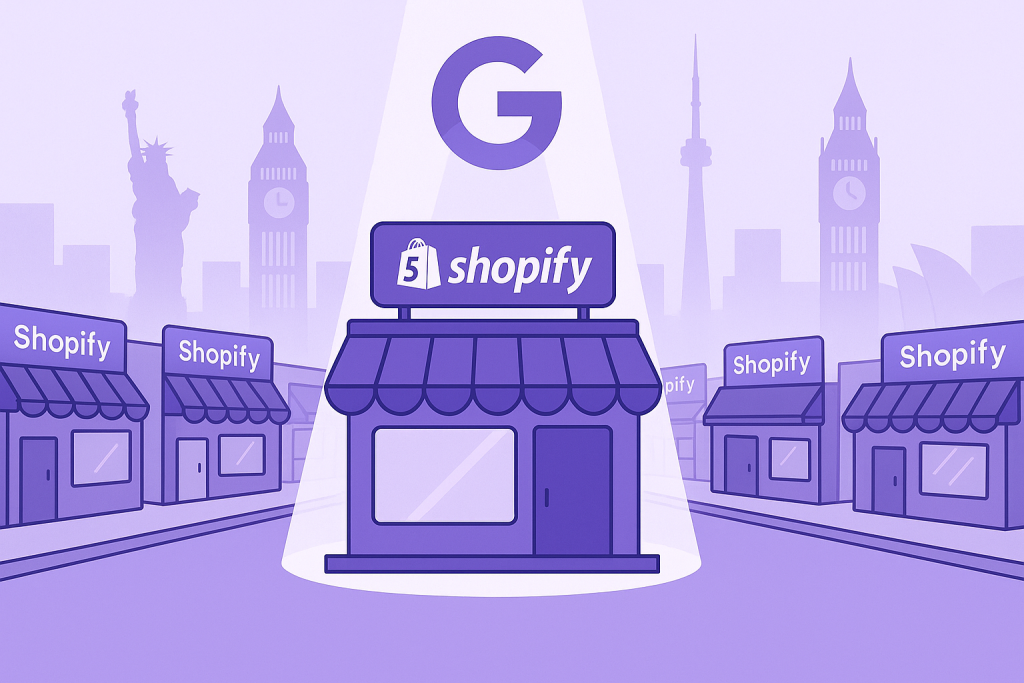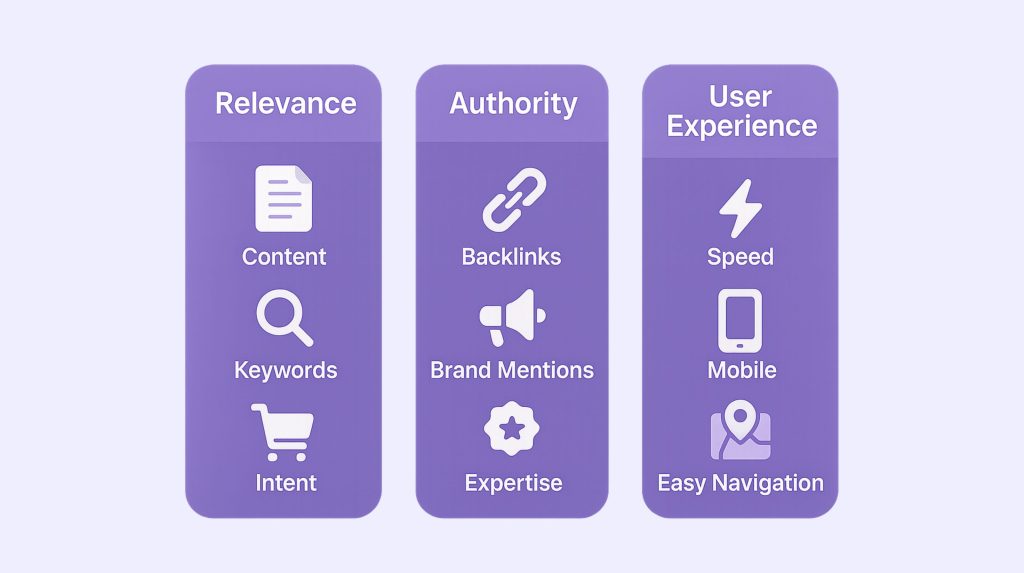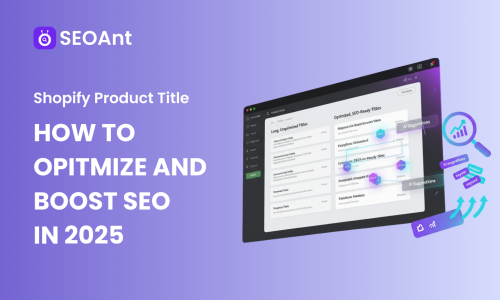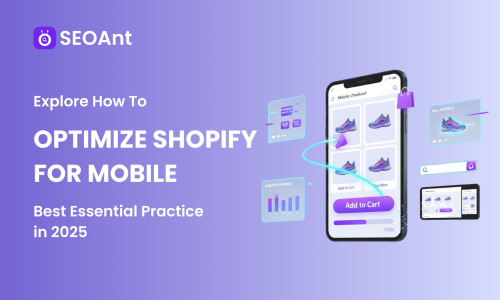
Table of Contents
Why Shopify SEO Drives Global E-commerce Success?
Did you know that 68% of online experiences begin with a search engine, yet 75% of Shopify stores worldwide struggle with basic SEO implementation? Whether you’re launching a tech startup in Silicon Valley, a sustainable fashion brand in London, or a surf accessories store in Sydney, this statistic should grab your attention immediately.
Shopify SEO is not just a marketing strategy; it’s the bedrock on which to build your store accessibility, so that customers around the world can find you. With 2.77 billion people shopping online in 2025, and over 5.5 million Shopify merchants, if you do not have a proper SEO optimization strategy no one will see you.
Advertising costs are exponentially increasing, leaving ad revenue short. Shopify SEO offers a long-term sustainable growth opportunity. By learning e-commerce SEO, you will earn the ability to outrank your competitors, reach customers around the globe, and reduce your reliance on paid advertisements.
In this Shopify SEO Checklist, you’ll discover:
– What Shopify SEO actually means and why it’s crucial for global success
– How search engines evaluate and rank your Shopify store worldwide
– Practical steps you can implement immediately, regardless of your location
– Common mistakes that cost store owners thousands in lost revenue
What is Shopify SEO?
Shopify SEO is the act of optimizing your Shopify store so it appears higher on Google’s, Bing’s, and other search engines’ products. No matter if a customer searches in New York, London, Toronto, or Sydney, Shopify SEO makes your products appear prominently in the results. It’s like having the best spot on the busiest street – except the “street” is the internet and your “spot” is your search ranking.

E-commerce SEO vs Regular SEO: Key Differences Explained
SEO for Shopify is quite different than SEO in the general web space. For starters, store owners are often overwhelmed by the number of products they sell and must optimize many hundreds or thousands of product pages.
| Shopify SEO | General Website SEO | |
| Content | Often involves optimizing hundreds or thousands of individual product pages. | Typically focuses on a smaller number of core pages, blog posts, and landing pages. |
| Intent Focus | Targets shopping intent — attracting customers ready to buy. | Targets a mix of informational, navigational, and transactional searches. |
| Competition | Competes with both independent stores and large marketplaces like Amazon, eBay, and local leaders. | Competes mainly with other websites in the same niche or industry. |
| Seasonality | Must account for promotional and inventory cycles that affect visibility and sales. | Seasonality may be less pronounced depending on industry. |
Why SEO is Critical for Global E-commerce Success
SEO is not only a sandbox, but it’s also where visibility begins. In 2025, approximately 68% of all online experiences begin with search engines. 53.3% of all website traffic is derived from organic search and is the largest driver of sustainably-generated traffic (Source: Intergrowth). Search engines remain the primary access point to discovery, with over 90% of clicks occurring on the first page of results and only 0.63% of users clicking on page 2. Performance is important too—the first organic result, number 1, generates nearly 39.8% of all clicks. Winning that first position is a huge traffic lever. What’s great about SEO? That long-term equity: SEO compounds results over time and creates momentum, credibility, and ROI that cannot be created through paid ads.
How Search Engines Rank Your Shopify Store
Google Ranking Factors for Shopify Stores

Search engines evaluate your Shopify store based on three primary factors that remain consistent globally:
1. Relevance: Does your content match what searchers want?
– Content Quality: Comprehensive, helpful product information
– Keyword Targeting: Natural use of terms customers actually search
– User Intent: Matching content to different stages of the buying journey
2. Authority: Can search engines trust your store?
– Backlinks: Other reputable websites linking to your store
– Brand Mentions: Recognition across the web and social media
– Expertise: Demonstrating knowledge in your product category
3. User Experience: Do visitors have a positive experience?
– Page Speed: Fast loading times across all devices
– Mobile Optimization: Seamless mobile shopping experience
– Navigation: Easy-to-find products and information
Regional Search Engine Considerations
While Google dominates globally (89.66% market share), regional preferences matter:
Regional Search Engine Market Share in 2025:
| Country/Region | Bing | Yahoo | Others | |
| United States | 86.83% | 7.56% | 2.8% | 2.23% |
| United Kingdom | 93.35% | 4% | 1.39% | 0.69% |
| Canada | 89.5% | 6.55% | 2.04% | 1.34% |
| Australia | 94.57% | 2.74% | 0.82% | 1.87% |
E-commerce Specific Ranking Factors

On the product-specific side of things, availability is critical – items that are available will achieve a better ranking than items that are not in stock. Competitive pricing could improve visibility in search results – search engines want to serve you attractive results. Customer reviews function as trust signals that can affect both click-through rates and ranking. Great product images provide a quality experience. They offer some SEO benefit by improving engagement and conversion.
From a technical perspective, your site structure is important. Good categorization and navigation will allow users, and search engine crawlers, to understand the content of your store and the hierarchy of your site. Implementing schema markup (including structured product data), can help you achieve rich snippets of results (including star ratings or prices) that can elevate your visibility and improve Click-Through-Rates in the search results. Security features such as SSL certificates and secure checkout are both useful to users and improve SEO credibility.
Shopify SEO vs. Other Platforms
Platform Capabilities Comparison
Understanding how Shopify compares to other e-commerce platforms helps contextualize your SEO advantages and limitations:
Shopify SEO Advantages
– Automatic Technical SEO: XML sitemaps, robots.txt, SSL certificates handled automatically
– Mobile Optimization: Responsive themes and mobile-first approach by default
– Global Infrastructure: CDN and hosting optimized for international performance
– Multi-Currency Support: Built-in currency conversion with SEO considerations
– App Ecosystem: Extensive SEO app marketplace for specialized needs
Shopify SEO Limitations and Solutions
Limitations:
E-commerce platforms like Shopify offer ease of use but come with restrictions. You have limited technical control, meaning server configurations and advanced settings can’t be modified. SEO performance often depends on your theme, and URL structures may lack full customization. Additionally, the platform’s setup can lead to duplicate content issues.
Solutions:
Use SEO apps to enhance functionality, and select SEO-optimized themes from trusted developers. Prioritize a strong content strategy with unique, high-value pages. For more complex needs, seek expert support from certified Shopify Partners.
Getting Started: Your First Steps to SEO Success
Shopify SEO Audit: Quick Assessment
Before implementing any SEO strategies, understand your current position:
Quick SEO Health Check:
1. Google Your Business Name: Do you appear in the first 3 results?
2. Check Mobile Experience: How does your store look on a smartphone?
3. Test Site Speed: Use Google PageSpeed Insights to check loading time
4. Review Current Traffic: Check Shopify analytics for organic search traffic
5. Analyze Top Pages: Identify which pages currently get the most visits
Global Competitive Research:
– Search for your main products in your target markets
– Note which competitors appear in top 5 results
– Analyze their approach: pricing, descriptions, images, content
– Identify content gaps and opportunities
Shopify SEO Setup: Essential Technical Foundations
Technical Setup Checklist:
– Google Analytics Setup: Install GA4 for traffic tracking
– Google Search Console: Verify your domain and submit sitemap
– Business Information: Complete store name, description, and contact details
– SSL Certificate: Ensure your store uses HTTPS (Shopify provides this automatically)
– Mobile Responsiveness: Test your store on multiple device sizes
Common Shopify SEO Mistakes: What Beginners Must Avoid
| Mistake | Impact | Solution |
| 1. Keyword Stuffing Across All Markets | Search engines penalize over-optimization, reducing rankings | Use keywords naturally and include semantic variations |
| 2. Ignoring Mobile Experience Globally | Mobile-unfriendly stores lose 53% of potential customers; 58% of e-commerce traffic is mobile | Test and optimize every page for mobile responsiveness |
| 3. Copying Manufacturer Descriptions | Duplicate content is filtered out by search engines; poor local engagement | Write original, benefit-focused descriptions; localize for regional language and preferences |
Global Shopify Setup: Market-Specific Configuration Tips
Cultural sensitivity mistakes in global SEO can significantly harm store performance. In the US, brands often over-promise or ignore regional differences like those between Texas and California, while failing to prioritize mobile optimization. In the UK, aggressive sales language, GDPR non-compliance, and neglecting post-Brexit preferences are common pitfalls.
The Canadian market values sustainability and bilingual content, so overlooking these, along with unclear cross-border policies, can alienate users. Meanwhile, in Australia, mobile-first design is essential, and businesses must align with southern hemisphere seasons and address vast shipping distances. Tailoring strategies to each region’s culture and expectations is crucial for success.
Technical Mistakes with Global Impact
1. Slow Loading Speeds
– Global Standard: Pages should load in under 3 seconds worldwide
– Regional Expectations: US (2.5s), UK (3.2s), Canada (3.0s), Australia (2.8s)
– Impact: 53% of mobile users abandon slow sites globally
– Solution: Optimize images, choose fast themes, use apps judiciously
2. Poor URL Structure
– Mistake: Using generic URLs like “/products/product-12345”
– Better Approach: Descriptive URLs like “/products/wireless-bluetooth-headphones-black”
– Global Benefit: Improves understanding across all search engines and cultures
– Solution: Edit product URLs to include relevant keywords
3. Missing Meta Descriptions
– Mistake: Leaving meta descriptions blank or using defaults
– Impact: Reduces click-through rates from search results globally
– Solution: Practice and implement writing your meta title, meta description as well as other meta tags
Shopify SEO Implementation: Your 90-Day Global Roadmap
Here’s a clear, phased roadmap to guide your Shopify store SEO implementation—organized by timeline so you know exactly what to focus on at each stage.
| Phase & Timeline | Focus Area | Key Actions |
| Phase 1: Immediate Actions (Week 0–1) | Technical Foundation | – Set up Google Analytics 4 for tracking – Add Google Search Console & submit XML sitemap – Audit homepage, top 5 products, and About page – Run mobile speed testIdentify top 3 competitors in your main market |
| Quick Content Wins | – Optimize homepage title (keyword + value prop) – Refine top product titles with keywordsWrite compelling meta descriptions for main pages – Add descriptive alt text to top product images – Update About page to build trust | |
| Phase 2: Week 1–2 | Content Development | – Conduct keyword research (20–30 high-intent terms) – Rewrite top 10 product descriptions with unique copy – Plan 5 helpful blog articlesCreate FAQ page – Adapt content for local markets |
| Technical Optimization | – Compress images & optimize site speed – Test full mobile checkout experience – Connect related products & categories with internal links – Add schema markup for rich snippets – Ensure sitemap includes all important pages | |
| Phase 3: Month 1–3 | Advanced Content Strategy | – Launch blog (2–3 articles/month) – Develop regional content variationsImplement review collection & optimization strategy – Produce product demo/how-to videos – Plan seasonal campaigns |
| Performance & Growth | – Set up conversion tracking & goals in analytics – Monitor keyword rankings by market – Begin quality link-building outreach – Align social media with SEO efforts – Continuously test & refine strategies |
Success Metrics to Track
And don’t forget to measure your work—tracking the right metrics ensures you know what’s working, what’s not, and where to focus next.
| Traffic Metrics | – Organic sessions – Keyword rankings by market – Geographic traffic distribution – Mobile vs. desktop performance |
| Engagement Metrics | – Average Session Duration: Time spent on site from organic traffic – Bounce Rate: Percentage of single-page visits – Pages per Session: Content consumption depth – Return Visitor Rate: Customer loyalty and content value |
| Conversion Metrics | – Organic Conversion Rate: Percentage of organic visitors who purchase – Revenue from Organic: Sales directly attributed to SEO efforts – Average Order Value: Purchase size from organic traffic – Customer Lifetime Value: Long-term value of SEO-acquired customers |
Frequently Asked Questions
1, What is Shopify SEO and why should I care?
Shopify SEO simply is when you optimize your e-commerce store so that your store ranks higher in search engine results when potential customers search for your products (online). You should care because 68% of all online experiences begin with a search engine, and businesses that have exceptional SEO don’t need to pay for advertisements to get significantly more customers.
2, How long does Shopify SEO take to work?
SEO work might begin to yield results within 4-8 weeks – when you implement new content and make improvements. Typically you’ll see significant growth in traffic within months 3-6. The full potential of SEO generally occurs after 6-12 months, as your store builds authority and search engines understand that the store is taking steps for optimization.
3, What are the costs involved in Shopify SEO?
Basic SEO can be done for free using Shopify’s built-in features and free tools like Google Analytics. Professional Shopify SEO apps cost $10-50/month, while hiring SEO experts ranges from $500-2,000/month depending on your market and needs. Most beginners can start effectively with $50-100/month in tools and apps.
4, Is Shopify good for SEO compared to other platforms?
Yes, Shopify provides excellent SEO foundations with automatic technical optimization, mobile-friendly themes, and global performance. While platforms like WordPress offer more technical control, Shopify’s built-in features and ease of use make it ideal for businesses focused on selling rather than technical management.
5, Can I do Shopify SEO myself as a beginner?
Absolutely! Shopify is designed for non-technical users, and basic SEO requires no coding knowledge. Focus on creating quality content, optimizing product descriptions, and following best practices. As you grow, you can add advanced techniques or hire experts for complex strategies.
Final Words
Remember: SEO is not a one-time setup but an ongoing process of improvement and adaptation. The most successful Shopify store owners treat SEO as a core business function, dedicating consistent time and effort to optimization while staying focused on serving their customers’ needs.
Ready for the next level?
Dive into “Shopify Store SEO: How Search Engines View Your Store in 2025” – Understand exactly how Google and other search engines evaluate and rank your store










